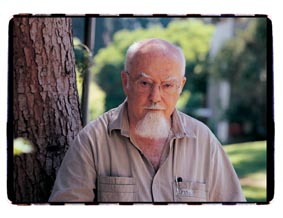Are you a journalist? Please sign up here for our press releases
Subscribe to our monthly newsletter:
While reading about an ancient Roman technique for maneuvering heavy stones using lead lumps, Prof. Shimon Reich of the Weizmann Institute's Materials and Interfaces Department came up with an idea: The age of ancient lead could be determined with the help of superconducting properties.
To put his idea to work, he enlisted the help of a metallurgist - Dr. Grigorii Leitus of the Weizmann Institute - and an archaeologist, Dr. Sariel Shalev of Haifa University and the Weizmann Institute's Helen and Martin Kimmel Center for Archaeological Science.
The widespread dating method currently used in archaeology - called radiocarbon dating - works only for objects containing carbon, such as bone and wood. Until now, no archaeological method existed to directly date the lead (or other metal) artifacts, often found in archaeological excavations.

Reich's method makes use of the fact that lead corrodes very slowly and that the products of corrosion accumulate on its surface (since they don't easily dissolve in water). Finding out how much corrosion has developed will give a good indication of how old the lead is. Yet how can one determine the amount of corrosion products in a lead object without affecting the object?
This is where superconductivity comes in. When frozen to a temperature below -266 degrees Celsius (around -447 degrees Fahrenheit), lead, in contrast to its corrosion products, becomes a superconductor (meaning an ideal conductor of electricity). Lead superconductors repel magnetic fields about 100,000 times more strongly than their corrosion products. By measuring the magnetic properties of the frozen lead artifact, one can accurately deduce the amount of uncorroded lead in the artifact. Then, weighing the object, one measures the mass of the lead metal along with its corrosion products. The difference between the two values yields the amount of corrosion.
Testing lead artifacts whose age was already known (via the context in which they were found), the scientists constructed a graph that correlates archaeological age and amount of corrosion (per unit area). This graph will be used in the future to date archaeological lead artifacts of unknown age. The technique is useful for artifacts found in ground that is not very acidic.
The lead artifacts examined were taken from excavation sites in Caesaria and Tel Dor, and derive from three different periods. The oldest was from the Persian period, around 2,500 years ago.
The next artifacts to be tested by this method will be taken from sunken ships. In antiquity, lead was used extensively to prevent barnacles from attaching themselves on the hulls of ships. The method could thus prove useful in fixing the age of marine ruins that are otherwise hard to date.
Prof. Reich is the incumbent of the Robert W. Reneker Chair of Industrial Chemistry.